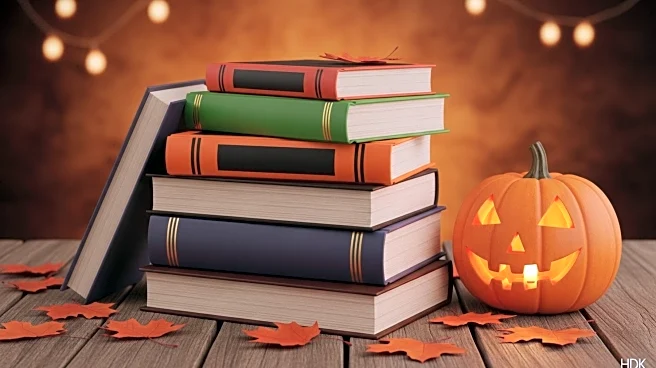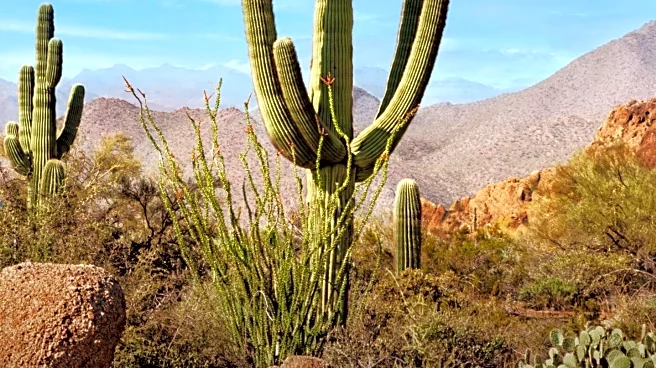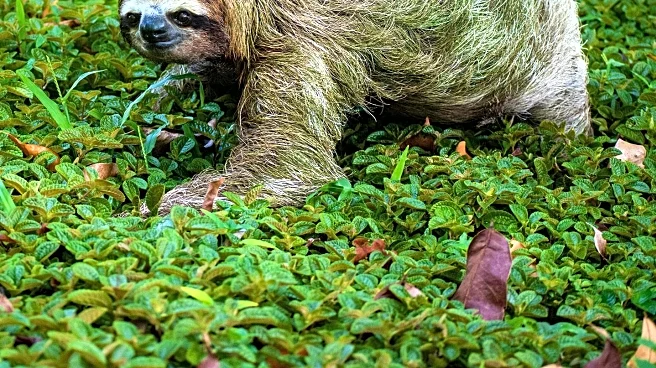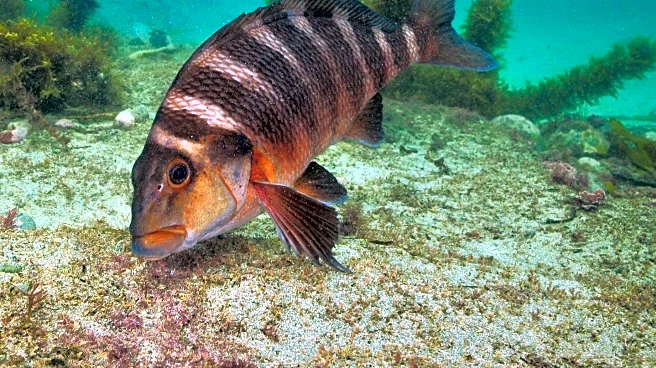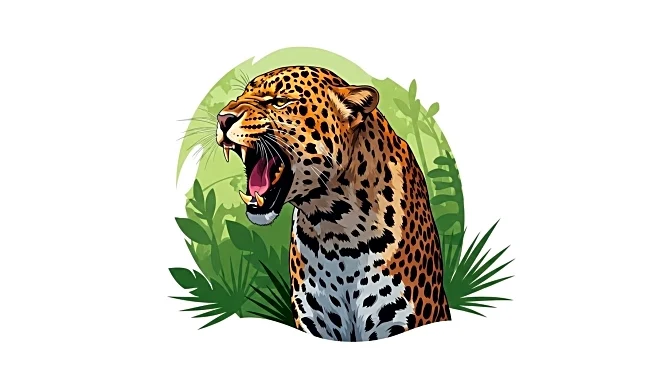What's Happening?
Axolotls, the amphibious salamanders native to Mexico City, have become a cultural phenomenon, particularly in children's literature. Known for their distinctive appearance, including wide-mouthed 'smiles' and frilly gills, axolotls have gained popularity since being classified as endangered in 2006. Their rise in pop culture was marked by their introduction in Squishmallows in 2019 and Minecraft in 2021. This year, publishers have capitalized on their appeal, releasing numerous axolotl-themed books for children. Capstone's Picture Window imprint has launched the 'Axolotls!' series, while Stone Arch published 'The Great Axolotl Escape.' These books feature axolotls in humorous and engaging storylines, resonating with young readers.
Why It's Important?
The axolotl trend highlights a growing interest in unique and endangered species, fostering awareness and education among children. By featuring axolotls in literature, publishers are not only tapping into a popular trend but also encouraging conservation efforts. The popularity of axolotls in media and literature reflects a broader cultural shift towards valuing biodiversity and environmental stewardship. This trend benefits publishers by aligning with educational goals and appealing to a market interested in both entertainment and learning. As axolotls continue to capture the imagination of children and adults alike, they serve as a symbol of the intersection between pop culture and environmental consciousness.
What's Next?
The axolotl craze shows no signs of abating, with more titles set to launch in 2026. This includes a range of books from finger-puppet and board books for young readers to middle-grade fantasy series. As the trend continues, it is likely that more educational and conservation-focused content will emerge, further embedding axolotls in cultural and educational narratives. Publishers may also explore multimedia adaptations, expanding the reach of axolotl-themed content. The ongoing popularity of axolotls could inspire similar trends with other unique and endangered species, promoting broader environmental awareness.
Beyond the Headlines
The axolotl's rise in popularity underscores the power of media and literature in shaping public perception and interest in wildlife conservation. By anthropomorphizing axolotls and integrating them into engaging narratives, creators are fostering empathy and a sense of responsibility towards endangered species. This trend also reflects a cultural fascination with creatures that defy conventional norms, as axolotls do not undergo full metamorphosis and remain in a juvenile state. Such characteristics resonate with themes of individuality and non-conformity, appealing to a diverse audience seeking representation and connection in the natural world.



